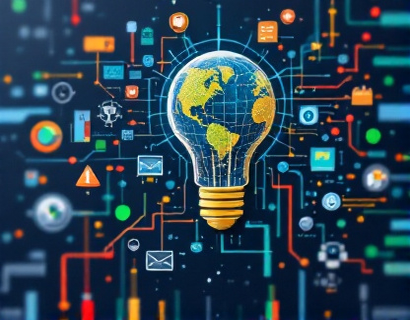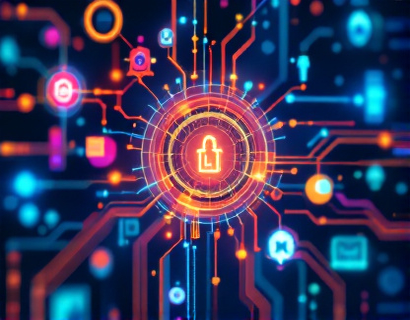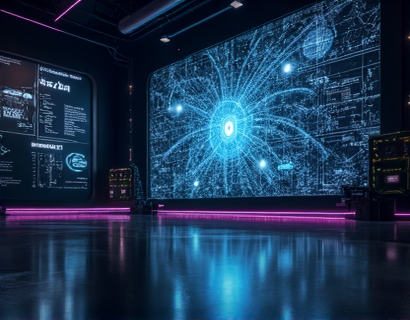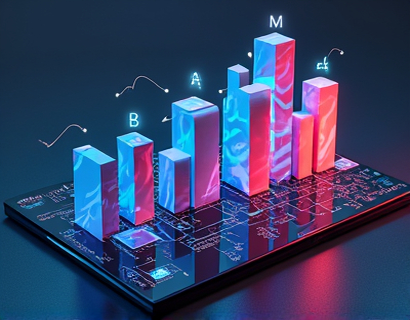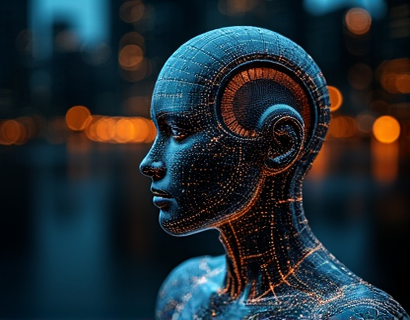Transforming Education with AI-Powered Chatbots: Ensuring Safe and Verified Access to Industry Insights for Students
The integration of artificial intelligence in education has opened new avenues for learning, particularly through the use of AI-powered educational chatbots. These chatbots provide a secure and verified platform for children and students to access specialized industry insights and workshop knowledge. The primary goal is to enhance learning through safe and interactive content, making education more accessible and engaging. This article delves into how these chatbots are revolutionizing the way students interact with educational material, ensuring they receive accurate, verified, and age-appropriate information.
Understanding the Need for Safe Educational Content
The digital age has brought about an explosion of information, but not all of it is suitable or accurate for children and students. The need for a safe and verified platform becomes paramount in this context. Traditional educational resources, while valuable, often lack the interactivity and immediacy that modern students expect. AI-powered chatbots bridge this gap by offering a tailored learning experience that is both safe and informative. These chatbots are designed to interact with users in a conversational manner, providing content that is not only educational but also engaging.
How AI Chatbots Enhance Learning
AI chatbots in education serve multiple purposes. They act as personal tutors, providing instant answers to questions, explaining complex concepts, and offering additional resources for deeper understanding. By leveraging natural language processing, these chatbots can understand and respond to user queries in a way that mimics human conversation. This interactivity keeps students engaged and motivated, fostering a love for learning. Moreover, the ability to provide real-time feedback and adapt to the user's learning pace makes these chatbots invaluable tools in education.
Verified and Contextual Content
One of the most significant advantages of using AI chatbots for educational purposes is the assurance of verified content. Unlike general search engines where the quality and accuracy of information can vary widely, chatbots can be programmed to source content from trusted and authoritative databases. This ensures that students receive accurate and up-to-date information. The chatbots can cross-reference data from multiple verified sources, providing a comprehensive and reliable view of the topic at hand. This feature is particularly crucial in subjects like science, technology, engineering, and mathematics (STEM), where precision and accuracy are essential.
Interactive and Personalized Learning Experiences
AI chatbots offer a personalized learning experience by adapting to the individual needs and preferences of each student. Through machine learning algorithms, these chatbots can analyze user interactions and tailor the content accordingly. For instance, if a student is struggling with a particular concept, the chatbot can identify this and provide additional explanations or related resources. This personalized approach not only enhances understanding but also boosts confidence and motivation. Interactive elements such as quizzes, games, and simulations further enrich the learning experience, making it more dynamic and enjoyable.
Access to Specialized Industry Insights
Beyond general educational content, AI chatbots can provide specialized insights into various industries. For students interested in specific fields, these chatbots can offer detailed information about career paths, current trends, and emerging technologies. This exposure helps students make informed decisions about their future and prepares them for the workforce. For example, a chatbot focused on the tech industry can discuss the latest advancements in artificial intelligence, cybersecurity, and data science, providing students with a glimpse into the cutting-edge developments shaping the future.
Workshop Knowledge and Skills Development
In addition to academic content, AI chatbots can facilitate access to workshop knowledge, enabling students to gain practical skills. Workshops are an excellent way to apply theoretical knowledge in real-world scenarios, and chatbots can guide students through these processes. By providing step-by-step instructions, video tutorials, and interactive exercises, chatbots help students develop hands-on skills. This is particularly beneficial for subjects that require practical application, such as coding, robotics, and arts. The chatbot can also connect students with mentors and industry professionals for further guidance and support.
Ensuring a Safe Online Environment
The safety of children and students online is a top priority. AI chatbots are designed with robust safety measures to ensure a secure learning environment. These measures include strict content filtering to block inappropriate or harmful content, real-time monitoring of user interactions, and compliance with data protection regulations. Parents and educators can also set parameters and monitor usage, providing an additional layer of oversight. The chatbot's interface is child-friendly, with intuitive navigation and clear, simple language that is easy for young users to understand.
Promoting Digital Literacy
Using AI chatbots in education not only enhances learning but also promotes digital literacy. Students learn to navigate digital platforms safely and effectively, a skill that is increasingly important in the modern world. The chatbot serves as a guide, teaching users how to evaluate information, recognize credible sources, and protect their personal data. This education in digital literacy equips students with the tools they need to thrive in a technology-driven society.
Collaboration and Community Building
AI chatbots can also foster a sense of community among students. By facilitating discussions, group projects, and collaborative learning activities, chatbots help build a supportive learning environment. Students can connect with peers who share similar interests, exchange ideas, and work together on assignments. This collaborative approach not only enhances learning but also develops important social skills such as communication, teamwork, and empathy.
Challenges and Considerations
While the benefits of AI chatbots in education are numerous, there are challenges and considerations that must be addressed. One key issue is the need for continuous updates and improvements to ensure the chatbot remains relevant and effective. This requires ongoing investment in technology and content development. Additionally, there is a need for teacher and parent involvement to complement the chatbot's capabilities. Educators can integrate chatbot interactions into their teaching plans, providing context and deeper insights. Parents can monitor usage and ensure that the chatbot aligns with their values and educational goals.
Future Prospects
The future of AI-powered educational chatbots looks promising. As technology advances, these chatbots will become even more sophisticated, incorporating advanced features such as emotional intelligence and augmented reality. The potential for personalized learning paths, real-time feedback, and immersive educational experiences is vast. The goal is to create a seamless and enriching learning environment that prepares students for the challenges of the future. By continuously refining and expanding the capabilities of these chatbots, we can ensure that education remains accessible, engaging, and effective for all students.
In conclusion, AI-powered educational chatbots represent a significant step forward in providing safe, verified, and interactive learning experiences for children and students. By offering access to specialized industry insights and practical skills development, these chatbots empower the next generation to succeed in an increasingly complex world. As we continue to innovate and refine these tools, the potential for transformative educational change is immense.











